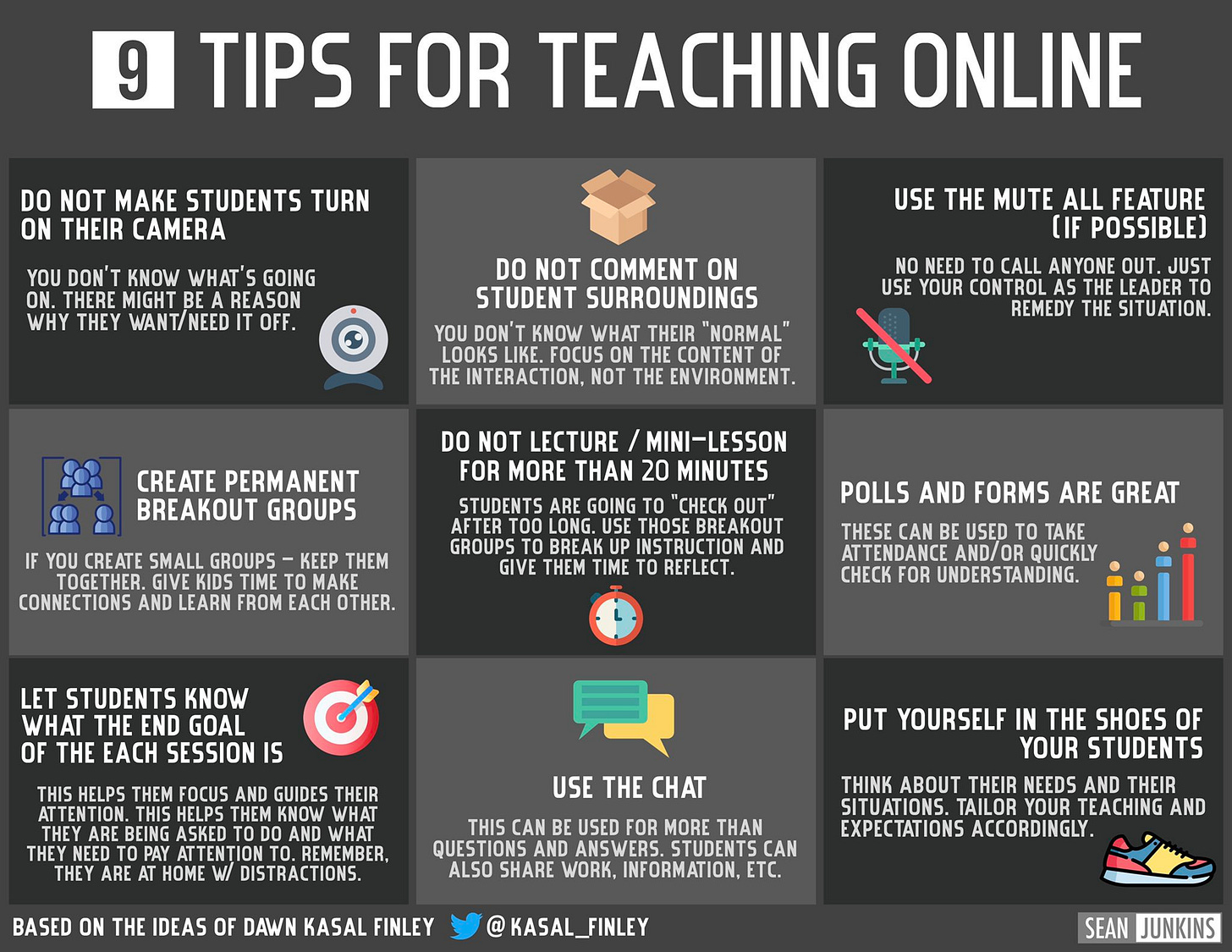Tip: Don't Require Cameras On
Think about why we would want our students to leave their cameras on, and focus on other ways to address these concerns than requiring cameras.
This week I have been reflecting on fall and what I’ll do differently with my remote synchronous classes (vs. the asynchronous classes I taught this summer), and specifically how I will use our synchronous class time. To that point, I’ve sought out a few different resources to help me think through student engagement in the remote synchronous space. I have shared resources in the past about Zoom (screen fatigue, multitasking, how long a live class should be) and suggested some lower-bandwidth, more flexible alternatives. I continue to be concerned about the about of time we are potentially expecting students - and ourselves - to be “on camera” this fall.
Concerns about equity issues with requiring students to turn on their cameras during live sessions are persuasive. One issue I anticipate is students living others in their household also trying to work/take classes at the same time this fall, which could present internet access issues even for students who normally have reliable, fast internet. Many of my students are also parents, who will be managing their children’s online learning (as all our local K12 schools are remote for the fall) while also trying to complete their own classes. Other students may face issues with time zone differences, a lack of privacy or a quiet space to attend class, and mental and physical health challenges.
Equity Concerns in Zoom (Boston College Center for Teaching Excellence) and Student Identities Online: Equity and Access in the Zoom Classroom (Harvard’s Bok Center for Teaching and Learning) both touch on some of the equity issues. Harvard’s Center shared some Equity & Access suggestions for instructors and Stanford’s CETL has an excellent “how-to” resource list for creating inclusive/equitable online learning environments.
Karen Costa shared an article last week, Making Shapes in Zoom, addressing synchronous classes and student engagement. She offers thoughtful advice about how to increase engagement without relying on “cameras on” and asks instructors to be open to different “shapes” of what engagement can look like: “Many teachers have a shape that they think attention and engagement look like, and they work very hard to get students into that shape.” She also has written about forcing students to turn on their cameras from a trauma-informed perspective.
In the end, I think the best advice (thanks to Nicole Campbell) I have heard is this: think about why we would want our students to leave their cameras on, and focus on other ways to address these concerns than requiring cameras. If the concern is that you, the instructor, don’t like teaching to a screen of black boxes - which I can certainly empathize with - I would gently push back against your need holding preference over the students’ needs.

Image created by Sean Junkins, based on ideas from Dawn Kasal Finley
Below are some additional resources about cameras in live meetings. Thanks, as always, for reading!

For more information:
Taharee Jackson shared a piece, COVID-19 and Videoclassism: Implicit Bias, Videojudgment, and Why I’m Terrified to Have You Look Over My Shoulderon the implicit bias in what she calls "videojudgment"
Please, let students turn their videos off in class written by Stanford student newspaper
Bodies Online ask us to think about how stereotypes of what a college professor “looks like” have the power to adversely impact instructors

